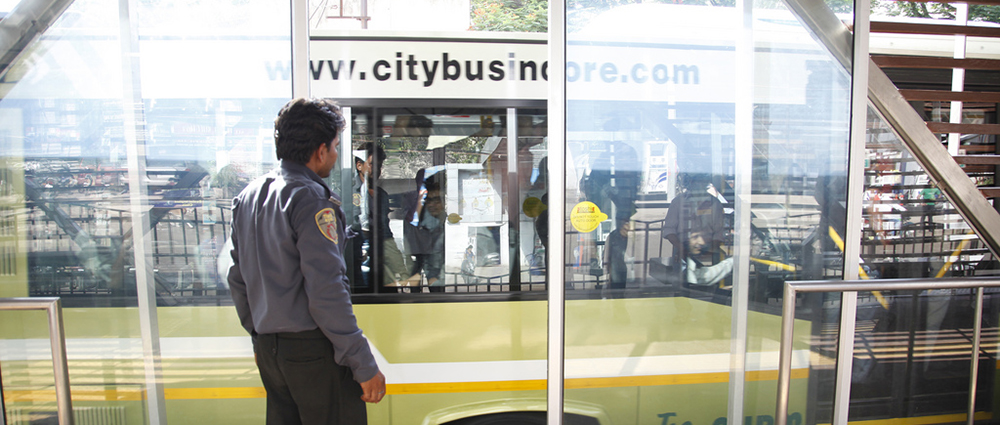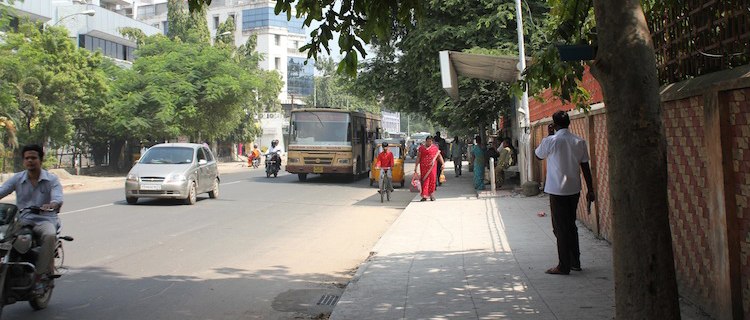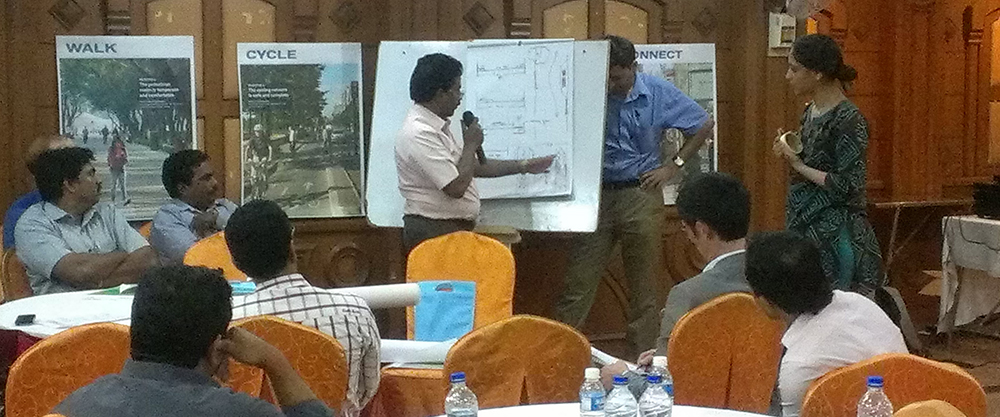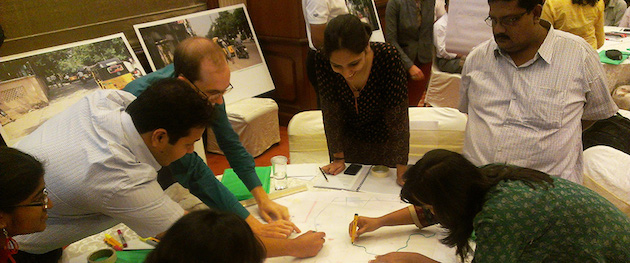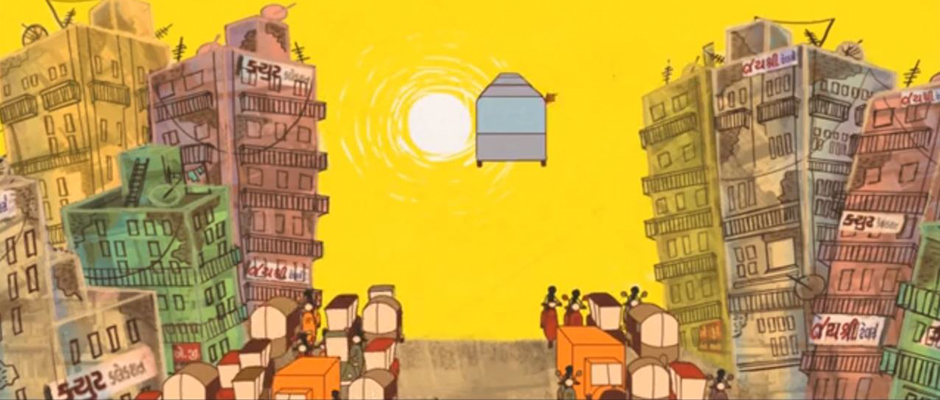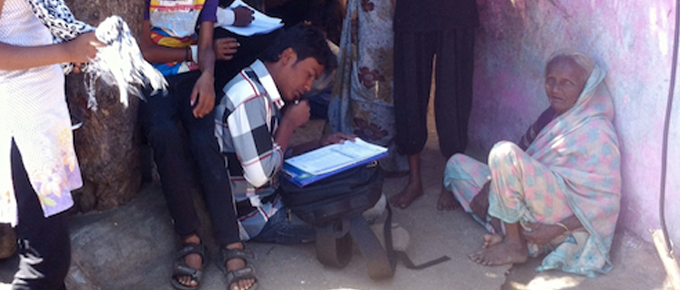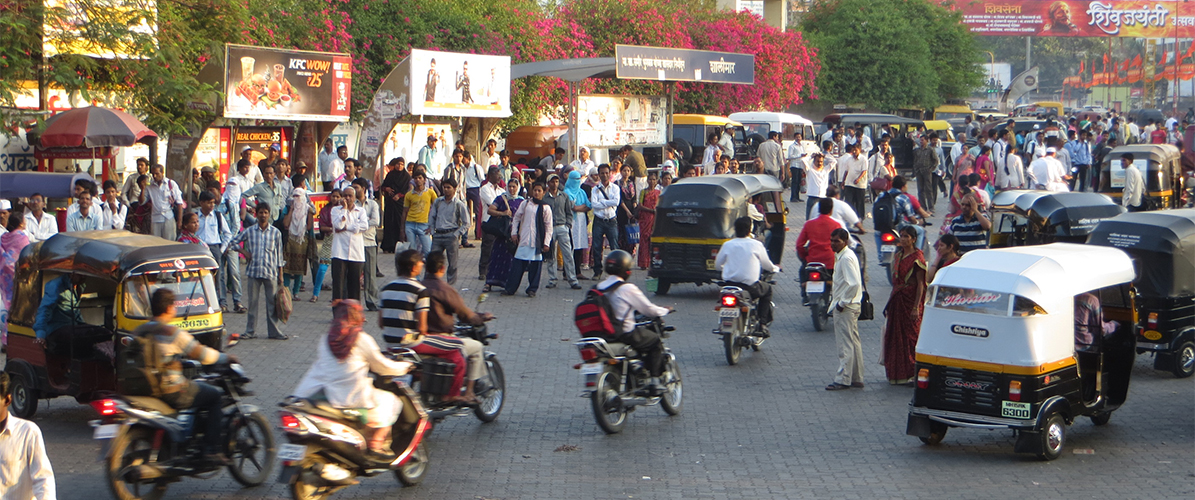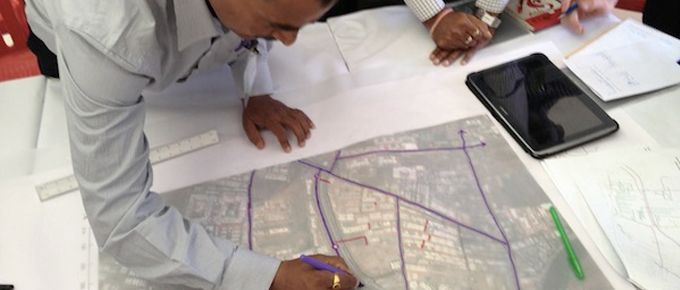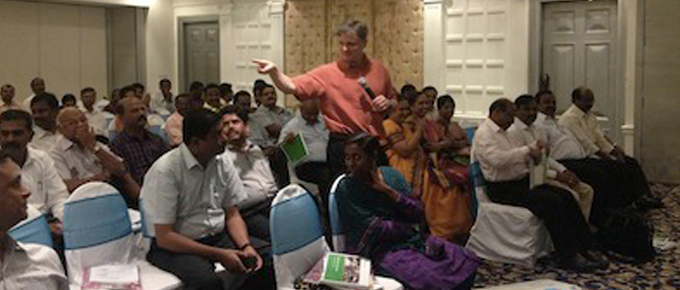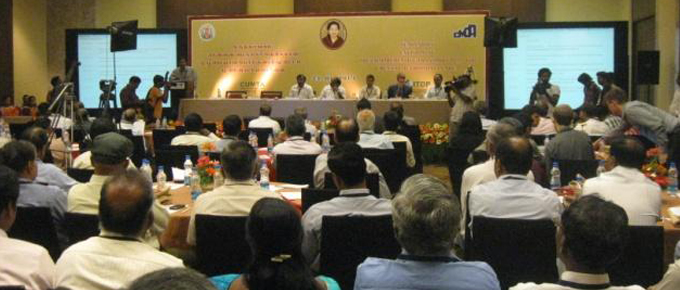The City of Indore a major commercial hub and the largest city in the Indian state of Madhya Pradesh. Like many Indian cities, Indore is facing a growing population, increasing congestion, and environmental degradation due to ever-higher vehicle use. To address these issues, in 2013 Indore launched iBus, the second true BRT corridor in India. For its successful implementation of iBus in a challenging political environment, Indore is a finalist for the 2014 Sustainable Transport Award.
In May 2013, Indore launched iBus, the second true BRT corridor in India after Ahmedabad’s Janmarg BRT. iBus provides a safe, comfortable, and efficient transport for 30,000 passengers per day on an 11 km corridor. This is the first of three phases of a 120 km BRT network along AB Road, one of the most congested streets in Indore. A hallmark of iBus’ implementation has been public input. Through public presentations and community meetings, the citizens of Indore become strong supporters of the iBus system.

Indore has already set a new standard for public transport in India and surpassed all known benchmarks for bus-based urban public transport in the country. iBus has exceeded ridership estimates with its first phase, and is providing an average of 26 percent reduction in travel time along the corridor. As the system is expanded, the city expects to see even greater impacts. At present, 16 buses operate on the corridor, from 7:00 AM in the morning to 10:30 PM at night. As the BRTS system extends its network, it will continue to improve traffic conditions in the city and enhance the overall quality of life for the residents of Indore.
BRT has been identified as a critical component of sustainable growth in Indian cities, and the success of iBus is an exciting tipping-point project for the adoption of BRT across the country. It demonstrates that affordable, high quality public transport is possible and is a necessity for rapidly growing cities, and is proving to be a model for other municpalities looking to address transport concerns. As a result of the initial success of the Indore BRT, the city of Bhopal (the capital of Madhya Pradesh and second largest city in the state) has already fast tracked the implementation their own BRT, which will serve more than 30,000 people per day.
Despite the success of iBus, the city has been grappling with political pressure to open the designated bus-only lanes to private car traffic. The city is fighting an order of the High Court to allow cars to use the lanes. The final decision is pending, and the STA Committee supports Indore’s fight to keep the BRT moving by keeping out cars.
Since 2005, the STA has been given annually to a city that has implemented innovative and sustainable transportation projects in the past year. These strategies must improve mobility for all residents, reduce transportation greenhouse and air pollution emissions, as well as improve safety and access for cyclists and pedestrians.
The 2014 finalists will be honored at a reception at the Washington Hilton International Ballroom on January 14, 2014, during the Transport Research Board annual conference in Washington, DC.
Past winners of the Sustainable Transport Award include: Mexico City, Mexico (2013); Medellin, Colombia and San Francisco, United States (2012); Guangzhou, China (2011); Ahmedabad, India (2010); New York City, USA (2009); London, UK (2008); Paris, France (2008); Guayaquil, Ecuador (2007); Seoul, South Korea (2006), and Bogotá, Colombia (2005).




